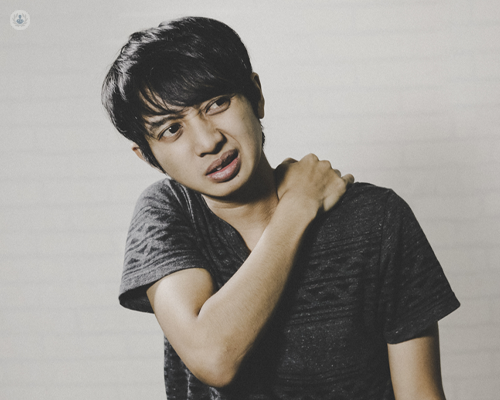Shoulder dislocations in contact sports and how they affect younger athletes
Written in association with:Shoulder dislocations are a common injury among younger athletes who participate in contact sports. Understanding the causes, implications, and management of shoulder dislocations is crucial for athletes, coaches, and healthcare providers to ensure effective treatment and prevention strategies. Leading consultant orthopaedic surgeon Mr Andrew Chambler provides a detailed insight to this, in this informative article.

What is a shoulder dislocation?
A shoulder dislocation occurs when the head of the humerus (the upper arm bone) is forcibly removed from its socket in the scapula (shoulder blade). This injury can happen in various directions, but the most common type is an anterior dislocation, where the humeral head is displaced forward.
What are the causes of shoulder dislocations in contact sports?
In contact sports such as rugby, football, and hockey, shoulder dislocations often result from:
- Direct impact: A blow to the shoulder from another player or an object can force the shoulder out of its socket.
- Falling on an outstretched arm: Athletes may dislocate their shoulders by falling onto an outstretched hand or arm, which transmits force to the shoulder.
- Twisting movements: Sudden and forceful twisting or rotation of the shoulder can cause a dislocation.
What are the symptoms of a shoulder dislocation?
The primary symptoms of a shoulder dislocation include:
- Severe pain: Intense pain at the time of injury, which may persist until the shoulder is relocated.
- Visible deformity: The shoulder may appear visibly out of place or deformed.
- Limited mobility: Difficulty or inability to move the shoulder or arm.
- Swelling and bruising: Swelling and bruising around the shoulder joint.
How is a dislocated shoulder immediately managed?
Immediate care for a shoulder dislocation includes:
- Immobilisation: Keeping the shoulder in a stable position using a sling or splint to prevent further damage.
- Ice application: Applying ice to reduce swelling and pain.
- Medical attention: Seeking prompt medical attention for relocation of the shoulder joint and to assess for associated injuries.
What is the impact of a dislocated shoulder on younger athletes?
Shoulder dislocations can have significant implications for younger athletes, including:
- Recurrent dislocations: Younger athletes are at a higher risk of recurrent shoulder dislocations due to the initial injury weakening the ligaments and joint capsule.
- Joint instability: Repeated dislocations can lead to chronic shoulder instability, affecting athletic performance and increasing the risk of further injuries.
- Loss of playing time: Recovery and rehabilitation can result in a significant loss of playing time, impacting the athlete's development and career progression.
Treatment and rehabilitation
Effective treatment and rehabilitation are essential for younger athletes to return to their sport safely. Treatment options include:
- Reduction: A healthcare provider will perform a reduction to reposition the humeral head into the socket.
- Immobilisation: After reduction, the shoulder is usually immobilised in a sling for a period to allow healing.
- Physical therapy: Rehabilitation involves exercises to strengthen the shoulder muscles, improve range of motion, and restore joint stability.
- Surgical intervention: In cases of recurrent dislocations or significant damage to the shoulder structures, surgery may be necessary to repair and stabilise the joint.
Prevention strategies
Preventing shoulder dislocations in contact sports involves:
- Strengthening exercises: Regular exercises to strengthen the shoulder muscles and improve joint stability.
- Proper techniques: Ensuring athletes use proper techniques during play to minimise the risk of falls and impacts.
- Protective gear: Using appropriate protective gear, such as shoulder pads, to absorb and distribute impact forces.
Arrange a consultation with Mr Chambler via his Top Doctors profile.


